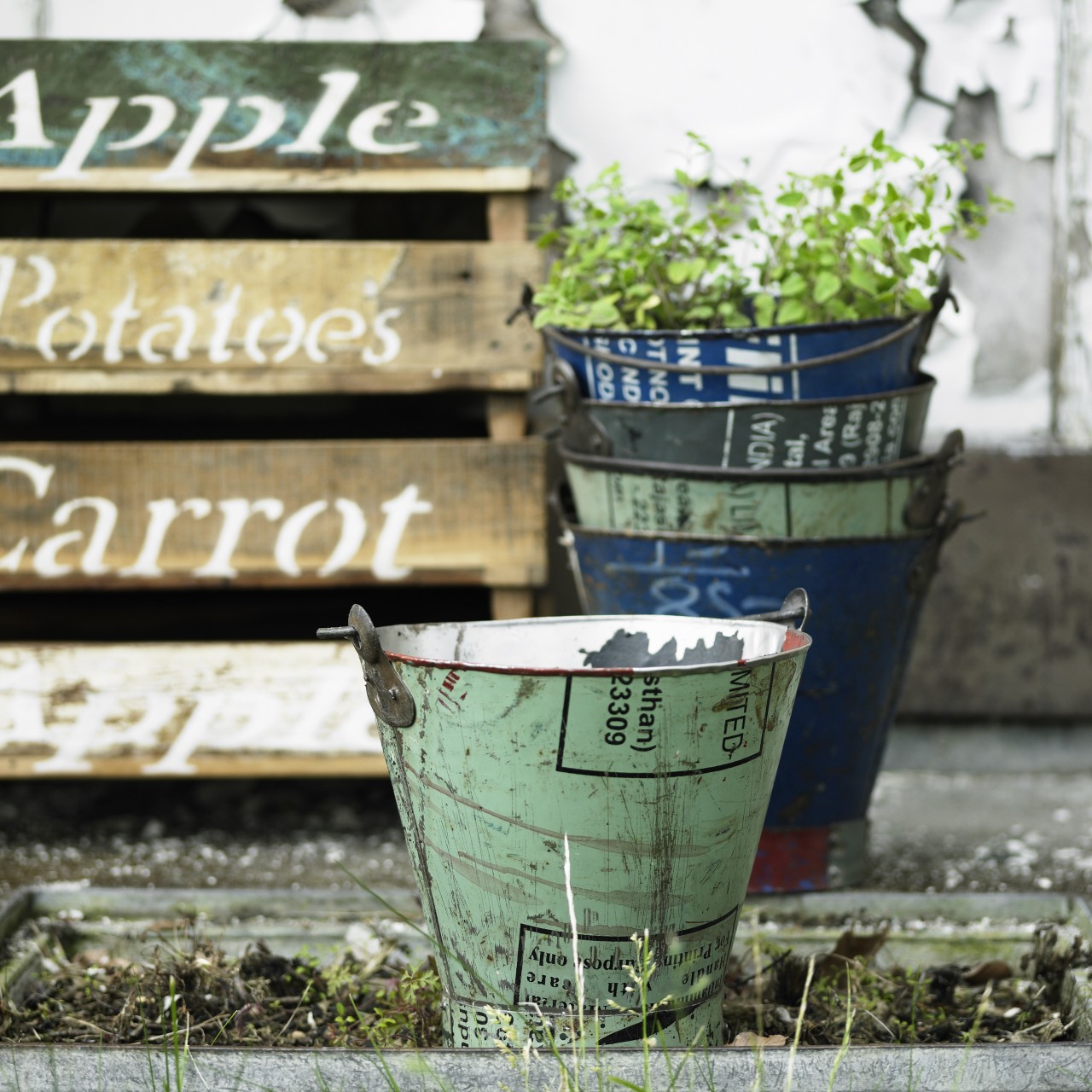 Q: I love to garden and especially enjoy eating food from my own garden, but recently I moved into an apartment. Is there a way I can still eat fresh veggies I grew myself without having the space or yard to do so?
Q: I love to garden and especially enjoy eating food from my own garden, but recently I moved into an apartment. Is there a way I can still eat fresh veggies I grew myself without having the space or yard to do so?
– Charles, Minneapolis
A: Thank you for your grand gardening query, Charles! There are a plethora of alternatives to gardening directly in the ground, and today we’re going to discuss one of the big ones: container gardening.
Container gardening is a simple, inexpensive, fun, and educational way to have fresh veggies and herbs even when you don’t have the yard space. So where do we start? From the ground up, of course! The soil that we use is the key to the health of our plants. We will want to use potting soil (not top soil), which has compost and other nutrients already mixed in. If you want organic potting soil, make sure the label says “Certified Organic.”
Now that we have the dirt on dirt, we need containers in which to put it. Any water impermeable container will do, but there must be holes in the bottom. Holes, each about the size of a pea, allow excess water to drain out of the bottom. If too much water sits in the pot for long periods of time, it can cause molding and rot. Place a plate or tray underneath to keep excess water from spilling.
When choosing planters you want to make sure they are large enough for the roots to grow and expand. For larger plants like tomatoes or peppers, go with a one or two gallon container; for most herbs, half gallon-containers or smaller should give you more than enough room. Gardening on a budget? Plastic five-gallon buckets from your local hardware store with holes drilled in the bottom are a perfect (and cheap) solution.
The next step is picking a location. A window or patio that gets a lot of sun, or even partial sun, is the perfect place to keep your containers. Your plants will need at least a couple of hours of sunlight a day to grow. But remember, plants in containers dry out faster than if they had been planted in the ground, so be sure to check the soil every day by sticking your finger in it. If it comes out dry, the plants need a drink! If you do not have a sunny spot available, you can get UV or grow lights to use in your house or apartment. And in terms of timing, remember that you’ll need to wait until there is no chance of frost before putting plants outside. A good rule of thumb is to keep them inside until after Mother’s Day weekend.
So we’ve got our containers full of dirt, now we need some seedlings. Luckily, we’ll have adolescent plants available the entire month of May at our annual plant sale. Healthy and certified organic, these are the only seedlings this old Professor buys. When buying baby plants, make sure they look healthy, not dried out or leaves turning black. Try to transplant the seedlings within five days of taking them home. If the roots are bursting out of the container, they will need to be replanted sooner rather than later. In the center of the pot dig a hole in which you could fit the entire seedling pot. Gently remove the seedling from its small container, lightly break up the bottom of the roots and place it in the hole. Fill in the space with potting soil and add a half- inch layer of soil to the planter, covering the entire top surface. Firmly pat, give a nice watering, place in the sun and you’re done! Not all vegetable seedling will thrive in containers, so here are a few inside tips to growing success:
Herbs are a really easy place to start as they tend to be lower maintenance and smaller in size.
Not all tomatoes are the same. Cherry tomatoes will do much better in containers than larger fruiting tomatoes, such as Bradywine or Purple Cherokee.
Try to avoid large vining plants like cukes, zukes and other squashes.
You can grow leafy greens (lettuces, chards, even kales) if the container is big enough. Try the five-gallon plastic buckets or even an old laundry basket.
If you can see roots bursting out of the container, it’s time to move to a bigger pot.
So you see, my dear my future gardening gurus, container gardening is easy and fun!
View the Spring Share 2014 PDF